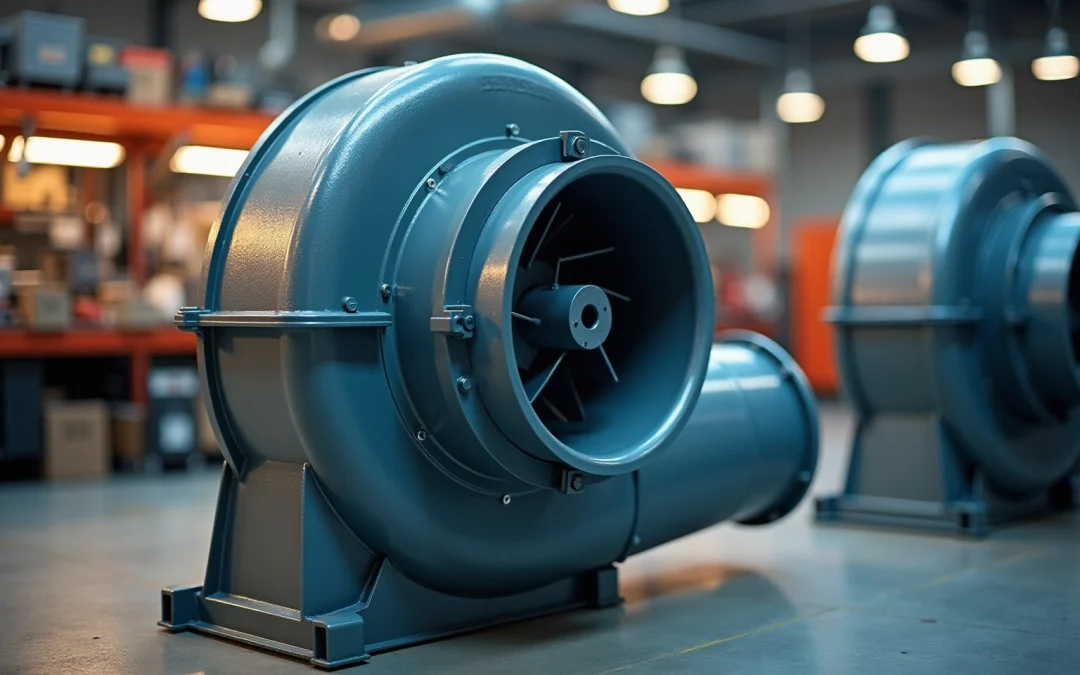Overview
The article delineates the critical steps in selecting high pressure centrifugal blowers, emphasizing key criteria such as airflow rate, static force, efficiency, noise levels, and material compatibility. It elaborates on a structured evaluation process that encompasses:
- Gathering specifications
- Comparing options
- Consulting experts
- Troubleshooting common challenges
This comprehensive approach ensures that engineers can effectively optimize their blower selection for specific applications.
Introduction
High pressure centrifugal blowers are essential components in a variety of industrial applications, from HVAC systems to dust collection, facilitating efficient air transport even in the face of considerable resistance. As the demand for energy-efficient and environmentally friendly solutions continues to rise, it is imperative for engineers to grasp the complexities involved in selecting the appropriate blower to optimize system performance. However, the selection process can be overwhelming, requiring a careful balance of factors such as airflow rate, efficiency, and material compatibility.
What are the critical steps and considerations that can lead to a successful blower selection, and how can potential challenges be effectively managed?
Understand High Pressure Centrifugal Blowers
High pressure centrifugal blowers, such as those manufactured by Gagner-Toomey Associates, are engineered to transport air or gases efficiently at elevated pressures, typically ranging from 5 to 10 psi, with capabilities that extend beyond this spectrum. These fans leverage the rotational force produced by an impeller, which draws air into the device and expels it at a 90-degree angle. This design is particularly beneficial for applications requiring substantial airflow against high resistance, including:
- HVAC systems
- Dust collection
- Various industrial processes, notably in critical sectors like electronics and automotive, especially when a high pressure centrifugal blower is utilized.
Gagner-Toomey Associates stands as the world’s largest producer of both standard and custom air-movers, offering an extensive selection of DC input fans that vary in size from 15 to 225mm. Recent advancements in turbine technology have focused on enhancing energy efficiency and reducing emissions, aligning with the growing demand for environmentally friendly solutions. The HVAC industry, which accounted for over 32% of the centrifugal fan market share in 2023, exemplifies the vital role these devices play in ensuring efficient air circulation and ventilation across residential, commercial, and industrial settings. Moreover, many models are designed for low noise operation and feature IP protection, catering to diverse usage requirements.
Understanding the operational principles, including and force generation, is essential for selecting the appropriate fan for specific applications. The typical pressure range for high pressure centrifugal blowers in industrial environments generally falls between 5 to 10 psi, making them suitable for various demanding settings. As the market continues to evolve, remaining informed about the latest trends and technologies will be critical for engineers striving to optimize their systems.
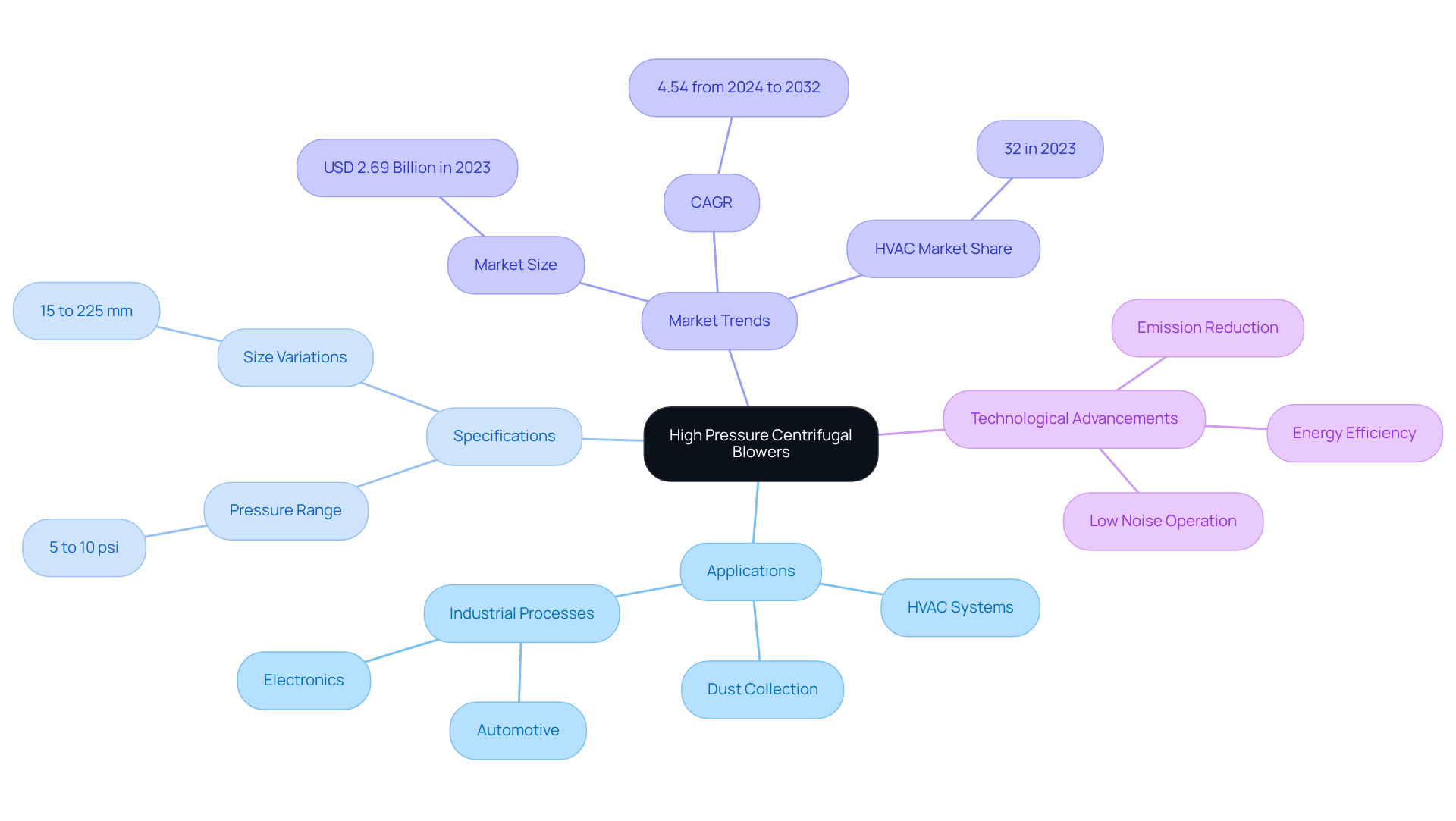
Identify Key Selection Criteria
When selecting a , several key criteria must be considered to ensure optimal performance and efficiency.
- Airflow Rate (CFM): Establish the required airflow for your application, measured in cubic feet per minute (CFM). This measurement is vital for confirming that the blower can manage the necessary air volume effectively.
- Static Force: Assess the static force requirements of your system. Static force is the resistance to airflow in ducts and is measured in inches of water gauge (SPWG). High-force fans are designed to counter this resistance, making it crucial to comprehend the drop in force within your system. Static pressures for high-pressure fans can reach up to 200 inches of water gauge (SPWG), highlighting their capability in demanding applications.
- Efficiency: Look for devices with high efficiency ratings, usually between 70% and 85%, to lower energy consumption and operational expenses. Efficiency can vary significantly between models, with backward-curved fans approaching the efficiency of axial fans. Choosing a fan with sturdy construction and specialized impeller designs is essential for sustaining performance.
- Noise Levels: Evaluate the sound emission of the device, especially if it will be used in noise-sensitive settings. Some models are specifically designed for quiet operation, which can be a significant advantage in residential or commercial settings.
- Material Compatibility: Confirm that the fan materials are suitable for the operational environment, particularly if corrosive substances are involved. High-pressure rotating fans made from stainless steel, high-strength alloys, FRP, and fiberglass are ideal for harsh environments, guaranteeing durability and reliability.
By thoughtfully evaluating these elements, engineers can select high pressure centrifugal blowers that not only meet their specific application requirements but also enhance overall system efficiency and durability.
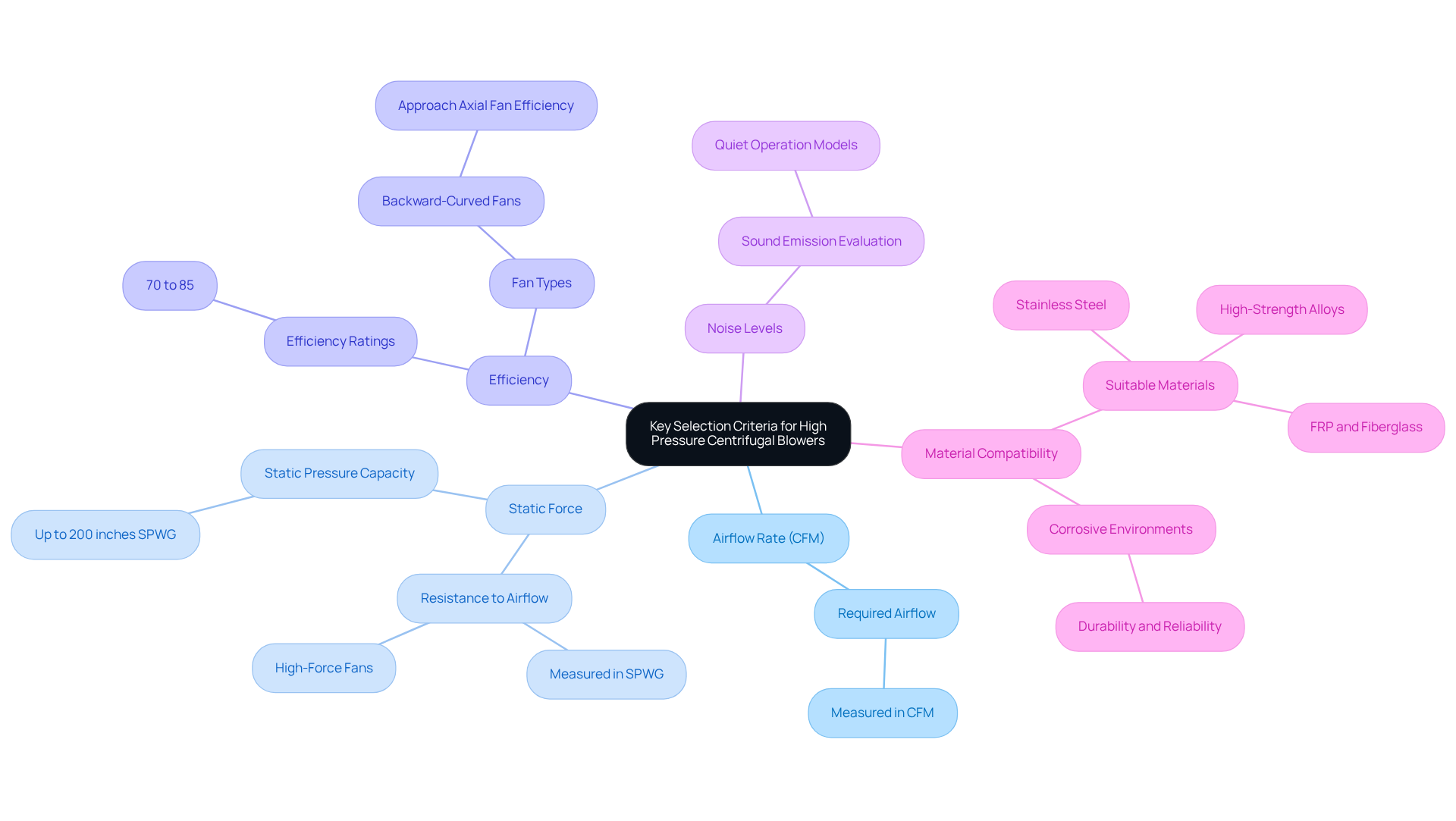
Evaluate and Compare Blower Options
To effectively evaluate and compare high pressure centrifugal blowers, it is essential to follow a structured approach:
- Gather Specifications: Begin by collecting detailed specifications for each fan option, including airflow rate, static pressure, efficiency, and noise levels. This foundational data is crucial for informed decision-making.
- Create a Comparison Chart: Next, organize the data into a comparison chart. This visualization highlights the differences and similarities among the options, facilitating a clearer selection process by revealing which models align best with your operational criteria.
- Consider Manufacturer Reputation: It is important to research the producers of the devices. Look for reviews, case studies, and testimonials to gauge reliability and performance in real-world applications. Notably, the Asia Pacific centrifugal fan market is projected to reach USD 3.81 billion by 2030, reflecting significant growth driven by reputable manufacturers who prioritize energy efficiency and innovation.
- Consult with Experts: If feasible, consult with industry specialists or engineers who possess experience with specific fan models. Their insights can provide valuable information that may not be available in product literature. Engineers often emphasize the importance of real-world performance, noting that factors such as durability and maintenance requirements in a high pressure centrifugal blower can significantly impact operational efficiency. As one engineer observed, “The performance of a fan in real conditions often uncovers its genuine abilities beyond what specifications can demonstrate.”
- Test Performance: Finally, if possible, arrange for performance testing of the fans in your particular application environment. This practical method yields direct information on how each model functions under real operating conditions, ensuring that the chosen device fulfills your operational requirements efficiently.
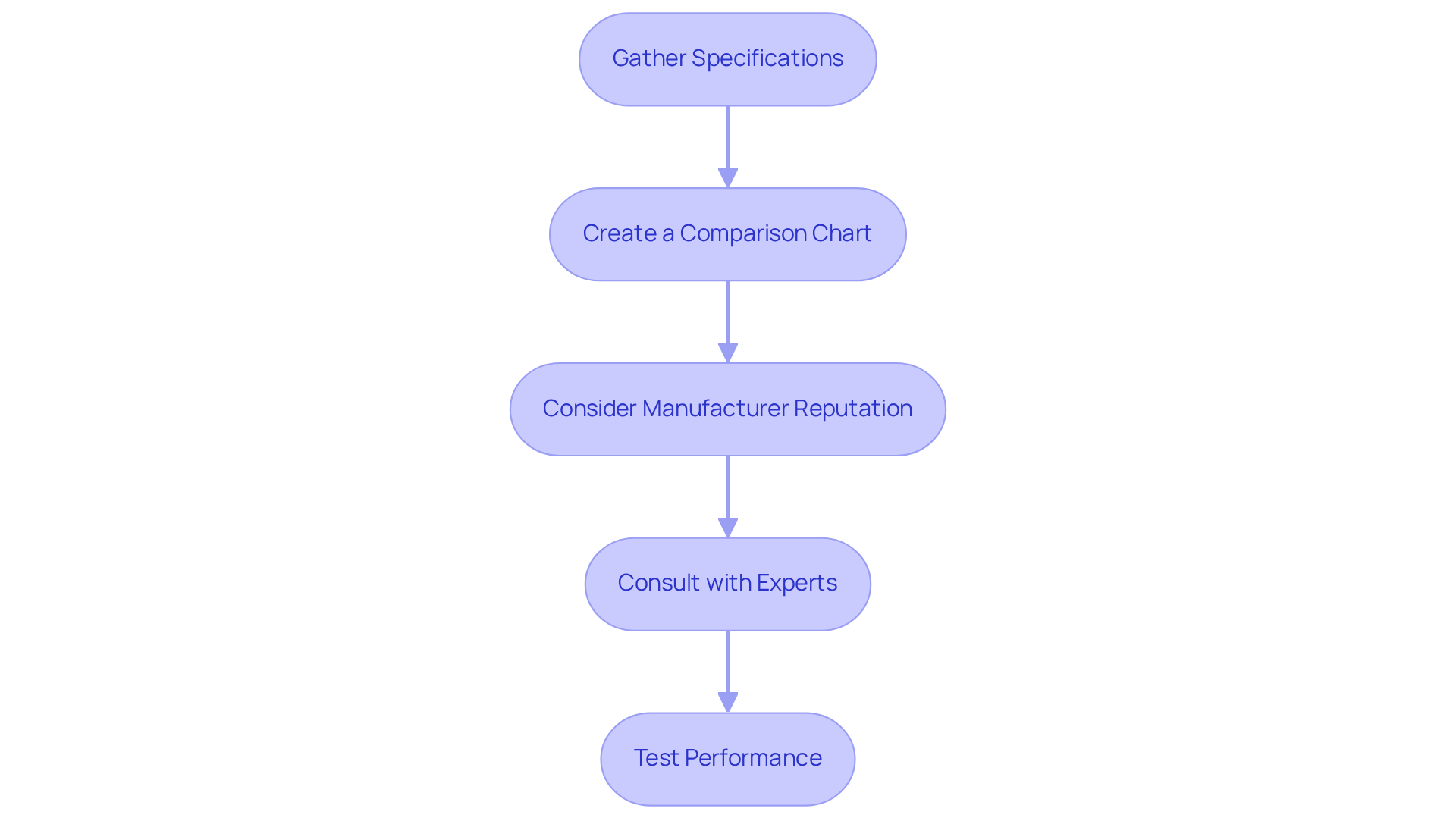
Troubleshoot Common Selection Challenges
When selecting a , you may encounter several common challenges. Here’s how to effectively troubleshoot them:
- Insufficient Airflow: Should the chosen fan fail to deliver adequate airflow, it is essential to reevaluate your calculations regarding the necessary cubic feet per minute (CFM) and static pressure. Confirm that the fan’s specifications align with your system’s requirements. Case studies reveal that miscalculations in airflow needs frequently occur, often resulting in operational inefficiencies.
- High Noise Levels: If noise is a significant concern, consider fans specifically engineered for quiet operation. Recent models boast considerably lower noise ratings, ranging from 40 dB to 80 dB, compared to older machines that typically exceed 120 dB. Additionally, ensure proper installation and maintenance, as loose components can exacerbate noise levels.
- Energy Inefficiency: If the fan consumes more energy than anticipated, evaluate its efficiency rating and compare it with other models. Implementing variable speed drives can optimize performance and reduce energy costs. The centrifugal fan market is projected to grow from USD 2.69 billion in 2023 to USD 4.01 billion by 2032, underscoring the importance of energy-efficient solutions in a burgeoning market.
- Compatibility Issues: Verify that the fan materials are suitable for the substances it will manage. If corrosion poses a risk, seek fans constructed from resistant materials to ensure longevity and reliability.
- Installation Challenges: If installation proves challenging, consult the manufacturer’s guidelines or seek professional assistance to guarantee proper setup and operation. Adequate installation is crucial for optimal performance and can prevent future complications.
By addressing these prevalent challenges with targeted solutions, engineers can significantly enhance the performance and reliability of their applications using high pressure centrifugal blowers.
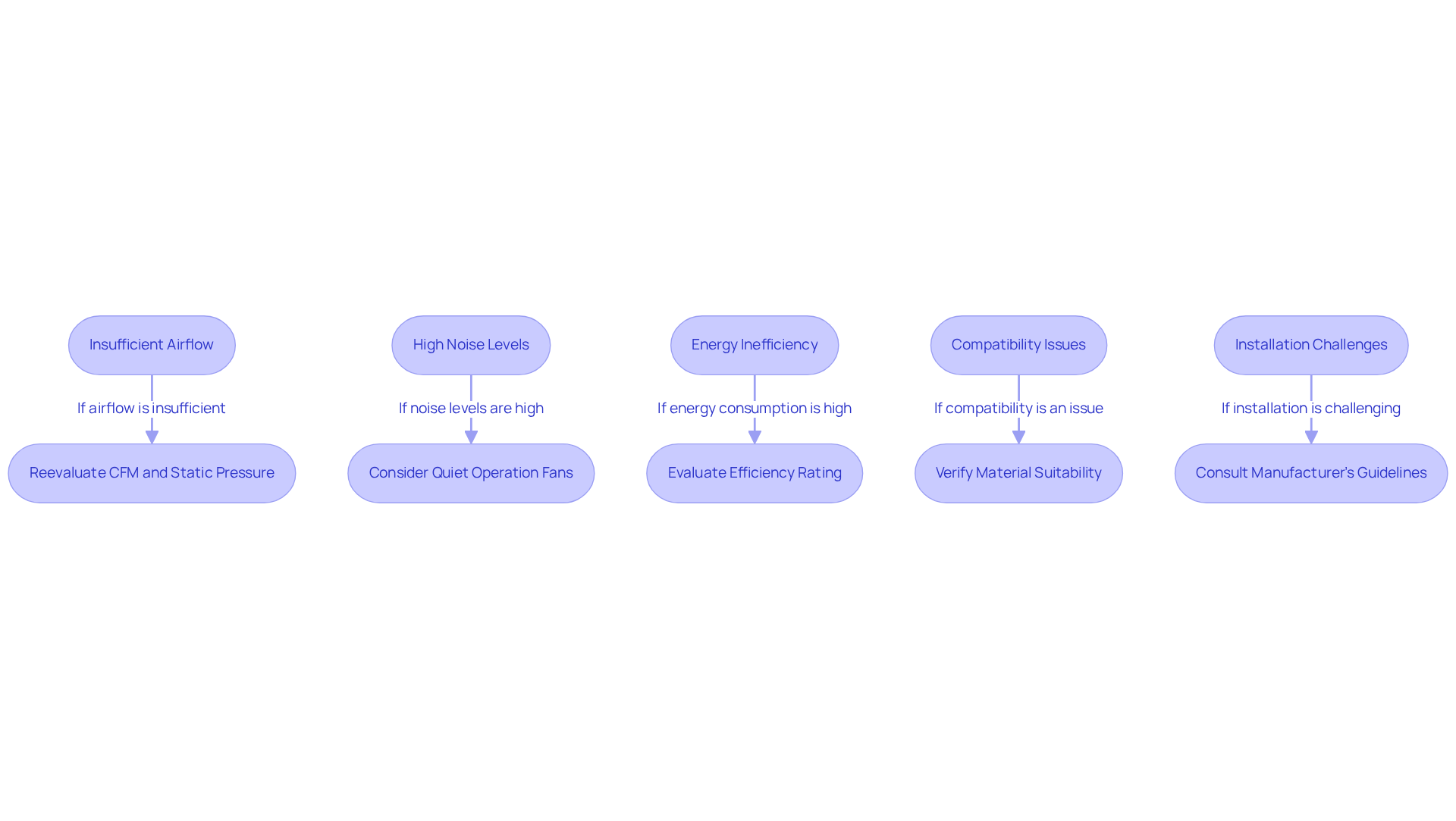
Conclusion
Selecting the right high pressure centrifugal blower is crucial for optimizing airflow and ensuring efficient operation across a range of applications. This article outlines essential steps and considerations for making an informed choice, emphasizing that a thorough understanding of operational principles and specific system requirements is fundamental to achieving optimal performance.
Key arguments throughout the article underscore the importance of evaluating:
- Airflow rates
- Static force
- Efficiency
- Noise levels
- Material compatibility
when choosing a blower. Furthermore, a structured approach to comparing different models—gathering specifications, consulting experts, and conducting performance tests—provides a comprehensive framework for engineers to navigate the selection process effectively. By addressing common challenges such as insufficient airflow, noise concerns, and energy inefficiency, engineers are empowered to enhance system reliability and performance.
Ultimately, the significance of high pressure centrifugal blowers extends beyond mere functionality; they play a vital role in various industries, driving innovation and efficiency. As the market continues to evolve, it is essential for engineers to stay informed about the latest technologies and best practices in blower selection. Embracing these insights not only ensures effective operations but also contributes to a more sustainable and efficient future in industrial applications.
Frequently Asked Questions
What are high pressure centrifugal blowers used for?
High pressure centrifugal blowers are used to transport air or gases efficiently at elevated pressures, typically ranging from 5 to 10 psi. They are beneficial for applications requiring substantial airflow against high resistance, including HVAC systems, dust collection, and various industrial processes in sectors like electronics and automotive.
Who manufactures high pressure centrifugal blowers?
Gagner-Toomey Associates is the world’s largest producer of both standard and custom air-movers, including high pressure centrifugal blowers.
What is the typical pressure range for high pressure centrifugal blowers?
The typical pressure range for high pressure centrifugal blowers in industrial environments generally falls between 5 to 10 psi.
What advancements have been made in turbine technology for blowers?
Recent advancements in turbine technology have focused on enhancing energy efficiency and reducing emissions, aligning with the demand for environmentally friendly solutions.
What market share does the HVAC industry hold for centrifugal fans?
The HVAC industry accounted for over 32% of the centrifugal fan market share in 2023.
What features do many models of high pressure centrifugal blowers offer?
Many models are designed for low noise operation and feature IP protection, catering to diverse usage requirements.
Why is understanding airflow dynamics important when selecting a blower?
Understanding the operational principles, including airflow dynamics and force generation, is essential for selecting the appropriate fan for specific applications.
How can engineers stay informed about the latest trends in centrifugal blowers?
Engineers can stay informed about the latest trends and technologies in the market to optimize their systems effectively.

